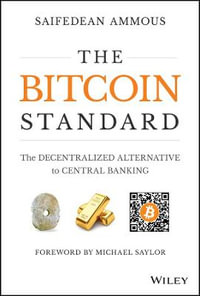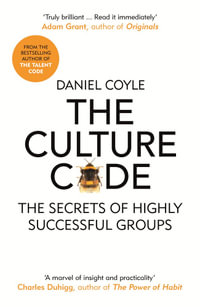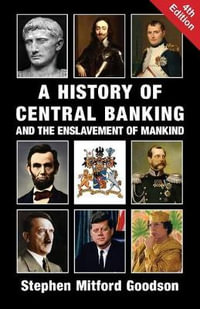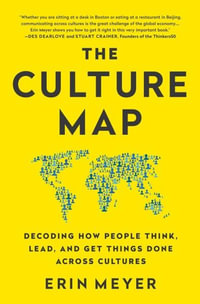
Putting Auction Theory to Work
Winner of the 2020 Nobel Prize in Economics
By: Paul Milgrom
Paperback | 11 May 2004
At a Glance
396 Pages
22.8 x 15.3 x 2.4
Paperback
$82.95
or 4 interest-free payments of $20.74 with
orAims to ship in 7 to 10 business days
Aimed at graduate students and professionals in economics, the volume provides the most up-to-date analysis of traditional theories of "optimal auctions" as well as newer theories of multi-unit auctions and package auctions, and shows by example how these theories are used. It explores the limitations of prominent older designs, such as the Vickrey auction design, and evaluates the practical responses to those limitations.
About the Author
Paul Milgrom is the Leonard and Shirley Ely Professor of Humanities and Sciences and Professor of Economics, Stanford University. He is the author of more than sixty articles and co-author of the influential textbook, Economics, Organization and Management (Prentice Hall, 1992). Professor Milgrom is a pioneer in the economic theory of auctions and co-designer of the simultaneous, multiple round auction that the FCC adopted for selling radio spectrum licenses.
Industry Reviews
| Preface | p. xi |
| Foreword | p. xv |
| Getting to Work | p. 1 |
| Politics Sets the Stage | p. 3 |
| Designing for Multiple Goals | p. 3 |
| Substitutes and Complements | p. 6 |
| New Zealand's Rights Auction | p. 9 |
| Better Auction Designs | p. 13 |
| The FCC Design and Its Progeny | p. 13 |
| Comparing Seller Revenues | p. 16 |
| The Academic Critics | p. 19 |
| Resale and the Coase Theorem | p. 19 |
| Mechanism Design Theory | p. 21 |
| Theory and Experiment | p. 25 |
| Practical Concerns | p. 26 |
| Plan for This Book | p. 31 |
| The Mechanism Design Approach | p. 35 |
| Vickrey-Clarke-Groves Mechanisms | p. 45 |
| Formulation | p. 45 |
| Always Optimal and Weakly Dominant Strategies | p. 49 |
| Balancing the Budget | p. 53 |
| Uniqueness | p. 55 |
| Disadvantages of the Vickrey Auction | p. 56 |
| Practical Disadvantages | p. 56 |
| Monotonicity Problems | p. 57 |
| The Merger-Investment Disadvantage | p. 60 |
| Conclusion | p. 61 |
| The Envelope Theorem and Payoff Equivalence | p. 64 |
| Hotelling's Lemma | p. 65 |
| The Envelope Theorem in Integral Form | p. 66 |
| Quasi-linear Payoffs | p. 69 |
| Holmstrom's Lemma | p. 70 |
| The Green-Laffont-Holmstrom Theorem | p. 71 |
| Myerson's Lemma | p. 73 |
| Revenue Equivalence Theorems | p. 75 |
| The Myerson-Satterthwaite Theorem | p. 77 |
| The Jehiel-Moldovanu Impossibility Theorems | p. 80 |
| Myerson and Riley-Samuelson Revenue-Maximizing Auctions | p. 84 |
| The McAfee-McMillan Weak-Cartels Theorem | p. 87 |
| Sequential Auctions and Weber's Martingale Theorem | p. 90 |
| Matthews Theorem: Risk Averse Payoff Equivalence | p. 91 |
| Conclusion | p. 94 |
| Bidding Equilibrium and Revenue Differences | p. 98 |
| The Single Crossing Conditions | p. 99 |
| The Monotonic Selection Theorem | p. 101 |
| The Sufficiency Theorem | p. 102 |
| The Constraint Simplification Theorem | p. 105 |
| The Mirrlees-Spence Representation Theorem | p. 106 |
| Deriving and Verifying Equilibrium Strategies | p. 110 |
| The Second-Price Auction with a Reserve Price | p. 111 |
| The Sealed Tender, or First-Price, Auction | p. 112 |
| The War of Attrition Auction | p. 117 |
| The All-Pay Auction | p. 119 |
| Revenue Comparisons in the Benchmark Model | p. 119 |
| Payoff Equivalence without Revenue Equivalence | p. 121 |
| Budget Constraints | p. 132 |
| Endogenous Quantities | p. 135 |
| Correlated Types | p. 137 |
| Expected-Revenue-Maximizing Auctions | p. 140 |
| Myerson's Theorem | p. 144 |
| Bulow-Klemperer Theorem | p. 148 |
| The Irregular Case | p. 148 |
| Auctions with Weak and Strong Bidders | p. 149 |
| Conclusion | p. 154 |
| Interdependence of Types and Values | p. 157 |
| Which Models and Assumptions are "Useful"? | p. 158 |
| Payoffs Depend Only on Bids and Types | p. 158 |
| Types Are One-Dimensional and Values Are Private | p. 159 |
| Types Are Statistically Independent | p. 161 |
| Statistical Dependence and Revenue-Maximizing Auctions | p. 162 |
| Wilson's Drainage Tract Model | p. 166 |
| Equilibrium | p. 167 |
| Profits and Revenues | p. 173 |
| Bidder Information Policy | p. 175 |
| Seller Information Policy | p. 177 |
| Correlated Types and Interdependent Values | p. 181 |
| Affiliation | p. 182 |
| The Milgrom-Weber Ascending Auction Models | p. 187 |
| The (Second-Price) Button Auction with Minimal Information | p. 188 |
| The Button Auction with Maximal Information | p. 195 |
| Some Revenue Comparisons | p. 198 |
| First-Price Auctions | p. 200 |
| Conclusion | p. 204 |
| Auctions in Context | p. 208 |
| The Profit and Surplus Contribution of an Entrant | p. 214 |
| Symmetric Models with Costly Entry | p. 216 |
| Symmetric Bidders and Uncoordinated Entry | p. 218 |
| Equilibrium in Entry and Bidding Decisions | p. 218 |
| Setting the Reserve Price | p. 222 |
| Coordinating Entry among Symmetric Competitors | p. 225 |
| Pre-qualifying Bidders | p. 227 |
| Auctions, Negotiations, and Posted Prices | p. 230 |
| Buy Prices | p. 232 |
| Asymmetric Models: Devices to Promote Competition | p. 234 |
| Example of Set-asides | p. 235 |
| Example of Bidding Credits | p. 237 |
| Example of Lot Structure and Consolation Prizes | p. 238 |
| Premium Auctions | p. 239 |
| Dutch vs. English Auctions and the Anglo-Dutch Design | p. 241 |
| After the Bidding Ends | p. 243 |
| Bankruptcy and Non-performance | p. 243 |
| Scoring Rules vs. Price-Only Bids | p. 245 |
| Conclusion | p. 247 |
| Multi-Unit Auctions | p. 251 |
| Uniform Price Auctions | p. 255 |
| Uniform Price Sealed-Bid Auctions | p. 257 |
| Demand Reduction | p. 258 |
| Low-Price Equilibria | p. 262 |
| Simultaneous Ascending Auctions | p. 265 |
| The Simultaneous Ascending Auction and the Walrasian Tatonnement | p. 268 |
| Clock Auctions | p. 279 |
| Strategic Incentives in Uniform Price Auctions | p. 284 |
| The Basic Clock Auction Model | p. 284 |
| The Alternating-Move Clock Auction | p. 287 |
| Strategic Incentives with Elastic Supply | p. 290 |
| Conclusion | p. 293 |
| Package Auctions and Combinatorial Bidding | p. 296 |
| Vickrey Auctions and the Monotonicity Problems | p. 302 |
| Bidders' Vickrey Payoffs Bound Their Core Payoffs | p. 305 |
| Vickrey Auctions and the Entry Puzzle | p. 305 |
| When Are Vickrey Outcomes in the Core? | p. 307 |
| Substitute Goods and Core Outcomes | p. 308 |
| Substitute Goods and Vickrey Outcomes | p. 312 |
| Bernheim-Whinston First-Price Package Auctions | p. 315 |
| Formulation | p. 316 |
| Profit-Target Strategies | p. 318 |
| Equilibrium and the Core | p. 319 |
| Ausubel-Milgrom Ascending Proxy Auctions | p. 324 |
| The Proxy Auction with Unlimited Budgets | p. 325 |
| Proxy Outcomes Are Core Outcomes | p. 326 |
| Profit-Target Strategies and Equilibrium | p. 327 |
| The Proxy Auction When Goods Are Substitutes | p. 329 |
| The Non-transferable-Utility Proxy Auction | p. 330 |
| Conclusion | p. 333 |
| Bibliography | p. 339 |
| Author Index | p. 347 |
| Subject Index | p. 351 |
| Table of Contents provided by Ingram. All Rights Reserved. |
ISBN: 9780521536721
ISBN-10: 0521536723
Series: Churchill Lectures in Economics
Published: 11th May 2004
Format: Paperback
Language: English
Number of Pages: 396
Audience: Professional and Scholarly
Publisher: Cambridge University Press
Country of Publication: GB
Dimensions (cm): 22.8 x 15.3 x 2.4
Weight (kg): 0.54
Shipping
| Standard Shipping | Express Shipping | |
|---|---|---|
| Metro postcodes: | $9.99 | $14.95 |
| Regional postcodes: | $9.99 | $14.95 |
| Rural postcodes: | $9.99 | $14.95 |
How to return your order
At Booktopia, we offer hassle-free returns in accordance with our returns policy. If you wish to return an item, please get in touch with Booktopia Customer Care.
Additional postage charges may be applicable.
Defective items
If there is a problem with any of the items received for your order then the Booktopia Customer Care team is ready to assist you.
For more info please visit our Help Centre.
You Can Find This Book In

Hillbilly Elegy
The Internationally Bestselling Memoir from Trump's Future Vice-President of the United States
Paperback
RRP $24.99
$21.75
OFF
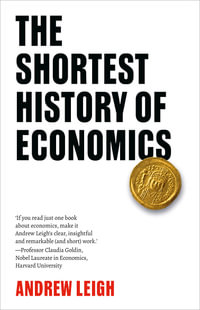
The Shortest History of Economics
The Powerful Story of Economic Ideas and Forces that Shape Our World
Paperback
RRP $27.99
$24.95
OFF
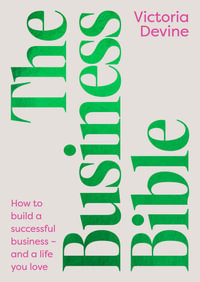
SIGNED COPY
RRP $36.99
$29.75
OFF

Think and Grow Rich (Bevelled Edge edition)
The Landmark Bestseller--Now Revised and Updated for the 21st Century
Not Supplied By Publisher
$22.75
This product is categorised by
- Non-FictionBusiness & ManagementSales & Marketing
- Non-FictionMathematics
- Non-FictionBusiness & ManagementBusiness Mathematics & Systems
- Non-FictionAccounting & FinanceFinance
- Non-FictionBusiness & ManagementOwnership & Organisation of EnterprisesPrivitisation
- Non-FictionEconomicsEconomic History
- Non-FictionIndustry & Industrial StudiesDistributive IndustriesRetail Sector
- Non-FictionEconomicsMicroeconomics


